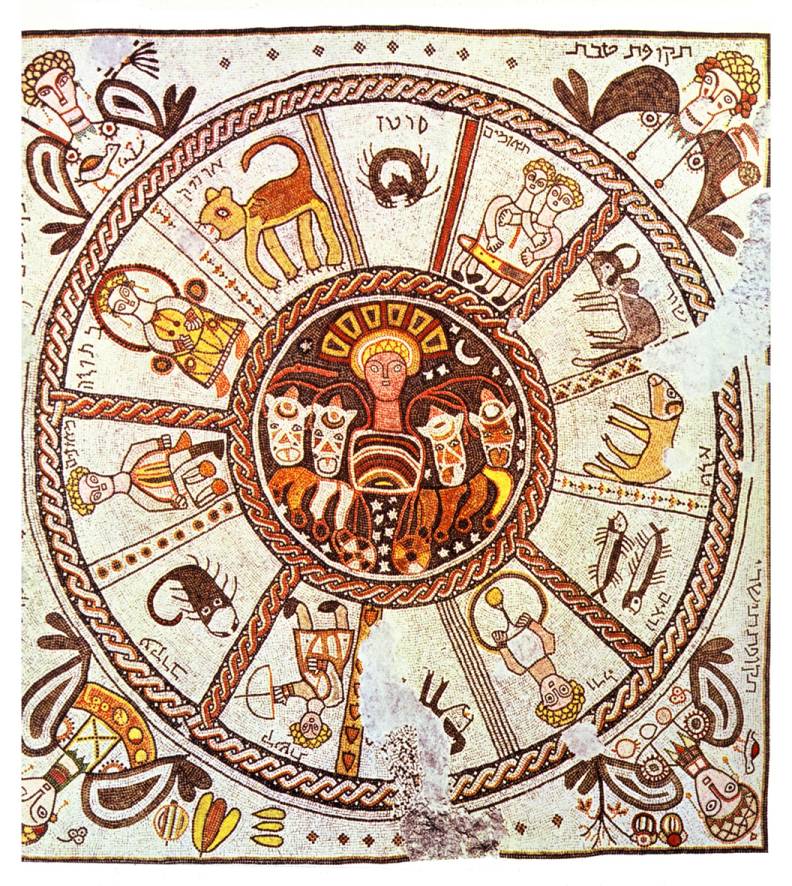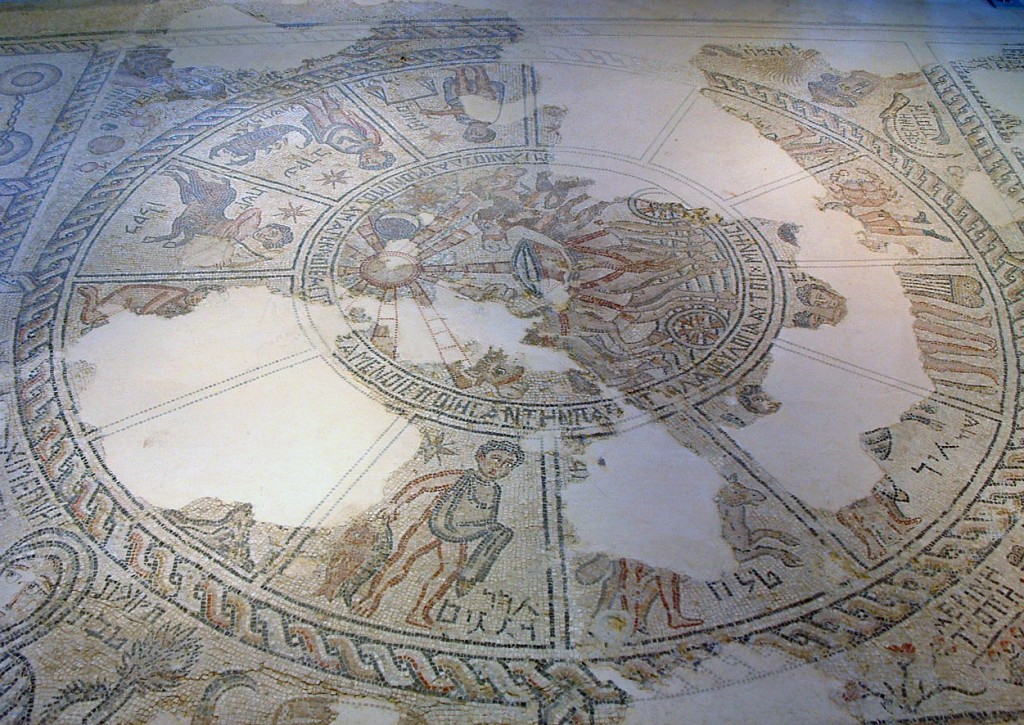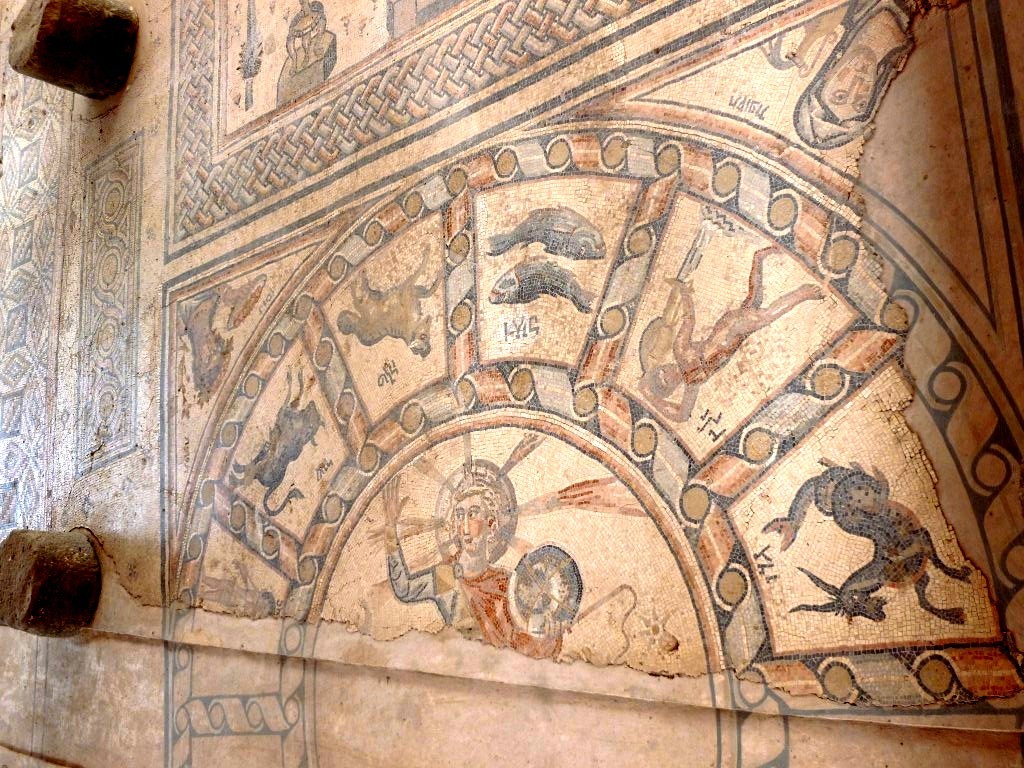We don’t expect to find the sun god Helios and images of the zodiac, complete with near naked human figures, in Jewish synagogues. So how should we understand these pagan mosaics in synagogues? The best (most completely) preserved are at Hammat Tiberias, Beth Alpha and Sepphoris.

–o–

–o–

I was intending to post about Yaffa Englard’s explanation for these apparent anomalies simply because I found easy access to “Mosaics as Midrash: The Zodiacs of the Ancient Synagogues and the Conflict Between Judaism and Christianity” by Englard in a 2003 edition of Review of Rabbinic Judaism. But one thing led to another and before long I was catching up with Rachel Hachlili’s Ancient Synagogues — Archaeology and Art: New Discoveries and Current Research (2013). Hachlili lists a score of different interpretations. About the only thing most (not all) of them seem to have in common is that they work hard at avoiding any suggestion that the Jewish synagogues indicated an interest in astrology.
It is surprising to find the zodiac design depicted on synagogue mosaic pavements in view of its pagan origin, and all the more so as the mosaics, lying inside the main entrances, would have been immediately visible to anyone entering the synagogue. This widespread use of a ‘pagan’ motif over several centuries invites many questions as to its meaning and function in the synagogue. (p. 386)
The following is Rachel Hachlili’s list of interpretations that are out there. I have broken up her lengthy paragraphs into a numbered list. Continue reading “Explaining Zodiacs in Ancient Synagogues”
